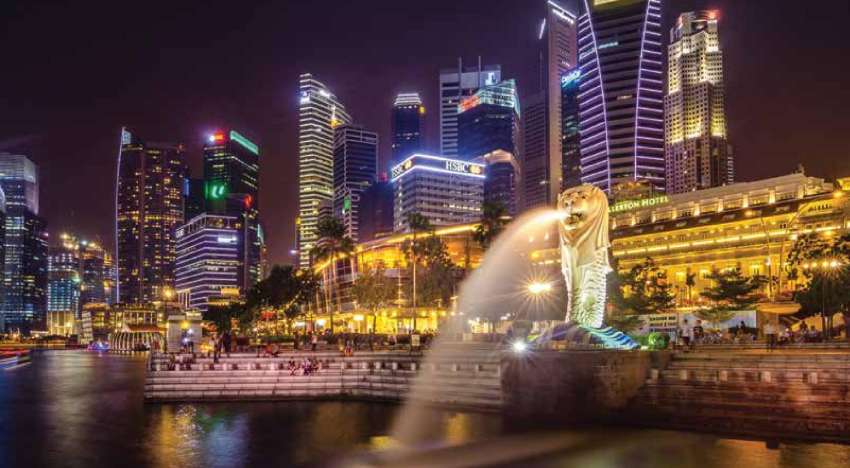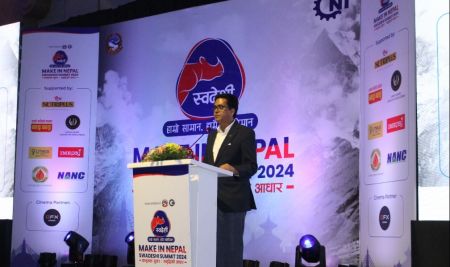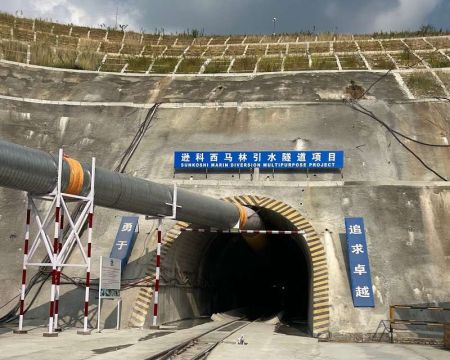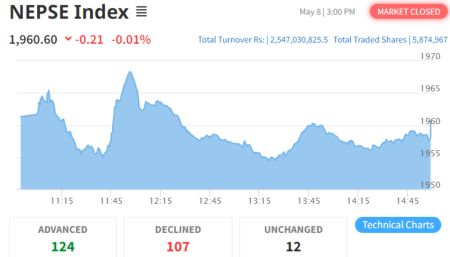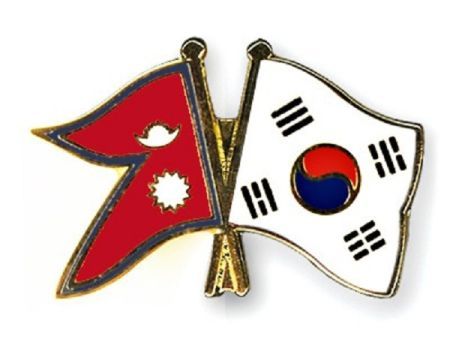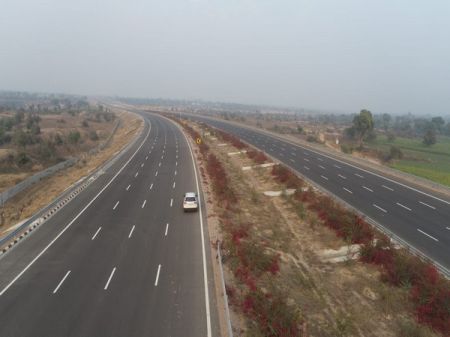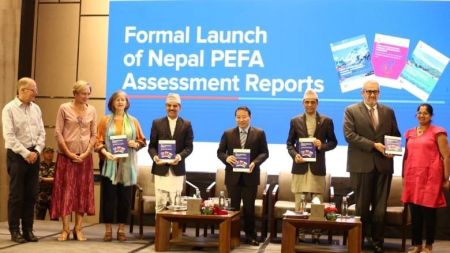BY Rajendra Prasad Koirala
Because of its advantageous location between China, India, and SouthEast Asia, Singapore began as a venture of the British East India Company in the early 1700s. It was fully incorporated as a British Empire crown colony by the late 1800s, at which point it developed into a significant naval base in the far east. The island's population was increasing quickly, and the infrastructure and stability it offered attracted people.
Singapore's situation was not good until 1965, primarily due to major issues such as poverty, racial tensions, high unemployment, and political unrest. Malaysia decided to sever ties with Singapore, leaving the recently independent country in a state of turmoil. However, a key figure emerged to drive positive change in Singapore – Lee Kwan Yew. A lawyer by profession, he recognised the fundamental importance of stability, the rule of law, and maintaining friendly relations with powerful multinational enterprises. Lee Kwan Yew served as the Prime Minister of Singapore from 1959 to 1990. Born on September 16, 1923, in Singapore, he passed away on March 23, 2015. Under his leadership, Singapore transformed into Southeast Asia's most prosperous nation.
Lee was born into a Chinese family with roots in Singapore dating back to the 1800s. English was his first language, and he only became fluent in Chinese, Malay, and Tamil upon entering politics. Lee received his education in Singapore and briefly attended the London School of Economics and Political Science. In 1949, he graduated with a law degree from Fitzwilliam House, Cambridge, earning a place on the honours list. During this period, he embraced socialist ideals. Despite being admitted to the English bar in 1950, Lee chose to return to Singapore. He began his career as the legal advisor for the Postal Union and subsequently extended his assistance to other trade unions, playing a crucial role in negotiations aimed at improving postal workers' pay.
Early Success
While a business-friendly climate was crucial, efficient government policies undoubtedly contributed significantly to Singapore's early prosperity. One of Singapore's early housing-related policies was an example of this. Housing on the island was subpar at independence. The slums that surrounded the city lacked even the most basic utilities and sanitation. In light of this, the government passed the Land Acquisition Act as one of its initial actions. This contentious statute allowed the government to acquire land at a reduced cost. But the decision was made to move individuals into better housing. The government made a monumental choice that resulted in 80% of the people moving into publicly constructed dwellings today.
Because they can purchase these residences at a reduced price, Singaporeans have a significant stake in the stability, prosperity, and personal riches of their country. Interestingly, Singapore maintains racial quotas for public housing as well, since social stability is a top priority for the government there, particularly given the country's multicultural makeup. However, Singapore's housing is very costly even with this kind of assistance. To alleviate this, the government permits them to access funds from the central provident fund, mandatory savings account to which citizens contribute as part of their employment. Employers match the first 20% of a worker's monthly income toward savings. Then, these savings can be put toward a person's or a family member's university education, housing, medical costs, pensions, and other expenses. The attractive return on these savings, approximately 5% for a government savings account, contributes to Singapore's impressive savings rate of over 53%, one of the highest globally.
Moreover, Singapore's effectiveness hinges significantly on wise government policies. Given the country's lack of significant natural resources and a relatively small population, it has actively combated corruption and streamlined business processes to attract crucial foreign direct investment. Today, Singapore remains a global leader in terms of ease of doing business, ranking second worldwide.
The foundation of Singapore's growth was the lure of multinational companies to its manufacturing sector. Manufacturing was initially low skilled, but it quickly moved to higher skilled industries like aircraft and semiconductors. Contrary to common assumption, Singapore is not just a massive private bank; with over 20% of the GDP, manufacturing continues to be the largest sector, with semi-conductors being the main export. This highly evolved economy, renowned for its finance, may seem odd for its emphasis on industry. Though, once again, sound governance is a major contributing factor in it.
Singapore's National Wage Council, established in 1972, is tasked with maintaining good relations between three important parties: the government, corporations, and labour unions. Its primary responsibility is to guarantee that wages only gradually rise in proportion to productivity, preserving exporters' competitive advantage. It is thought that, in theory, production per worker increases with cost per worker. Nevertheless, drawing foreign direct investment to Singapore is a major goal for all of Singapore's business-friendly initiatives and plans. Its economic significance is incalculable, given that the country receives the greatest amount of net foreign direct investment globally according to the World Bank. A measurement that considers all foreign investments coming in after any that are returned home or used to settle debt.
With about 6 million residents, Singapore is a small island nation. Nonetheless, its net foreign direct investment is over triple that of Japan and more than twice that of India. However, how Singapore has deployed FDI throughout the years is just as significant as the quantity of FDI it receives.
How does Singapore benefit?
Singapore embraced foreign firms as key contributors to its economic prosperity from its inception. Recognising the absence of significant natural resources, the nation identified its people as its most valuable asset. As foreign direct investment (FDI) flowed in, Singapore made sure that it accepted not only the funds but also employed national strategies to glean knowledge from these enterprises. Initiatives included the establishment of technical colleges and financial support for businesses to train their employees in pivotal fields such as information technology, electronics, and petrochemicals.
Boasting the world's highest human capital index at 0.88% and consistently high rankings in international standard testing, Singapore ensures that each child born today is poised to be 88% as productive as possible by the age of 18. Economists attribute Singapore's economic success to its strategic location acting as a regional hub by providing essential services to neighbouring countries and facilitating foreign businesses in the region. This strategic positioning has made the nation a gateway for international enterprises.
A prime example of Singapore's economic prowess is its maritime sector. The Port of Singapore is second only to Shanghai in terms of volume. But when it comes to transshipment, it is the global leader. This also extends to the aviation sector, with Singapore's airport functioning as an important connecting hub for flights to various destinations. The presence of both maritime and aviation hubs creates a network effect, reinforcing Singapore's status as a regional and global hub. The nation's commitment to infrastructure improvements enhances its capacity for exports despite its scarcity of natural resources. Singapore's strategic location and network effects contribute to a self-reinforcing cycle, particularly beneficial for tourism.
Refined petroleum products stand as Singapore's second-largest export, driven by the presence of one of the largest oil refineries in the region. This underscores the nation's role as a regional service provider, strategically positioning its economy for export-driven growth. Yet, understanding how the wealth generated from these exports is utilised is equally crucial. Singapore's early export success paved the way for the establishment of sovereign wealth funds. While the term is broad, these funds essentially function as financial pools, allowing the nation to invest in infrastructure, provide pension income, or stabilise the national budget.
Singapore is home to two major sovereign wealth funds, collectively amassing around $1.5 trillion in assets, both ranking among the top ten globally. The Temasek Sovereign Wealth Fund, originating from government-owned enterprises, plays a significant role in the country's industrial sector by funding businesses. The second fund, GIC (formerly the Government of Singapore Investment Corporation), managed by the Singaporean government, operates as a multinational investment corporation with $360 billion in assets. It functions like an asset management organisation, closely monitoring the nation's financial resources.
Realising how Singapore's assets are essential to comprehending its economy is one of the last parts in the jigsaw puzzle of its economy. Singapore has the sixth-highest global gross debt to GDP ratio. Although the country engages in borrowing, borrowing for consumption purposes other than investment is prohibited by law. Moreover, income generated from these investments enables Singapore to maintain a triple A credit rating, even with its relatively high gross debt to GDP ratio—ranked as the sixth highest globally.
Challenges
While Singapore boasts a remarkable economy, it faces its own set of economic challenges. Inequality poses a significant challenge in Singapore, despite the fact that the average inhabitant ranks among the richest globally. This masks actual disparities in wealth, evident in the country's Gini coefficient, a measure of income distribution, which stands relatively high at 0.45. However, this decreases to less than 0.4% when progressive taxes and government transfers are factored in. The reasons behind the country's affordability—or lack thereof—remain unclear. Owning an automobile is prohibitively costly due to government regulations, making it the most expensive place on the planet. However, it's important to note that this policy aims to promote the use of public transportation. Similarly, housing costs are exorbitant, particularly for properties in the private sector.
Critics argue that the nation's press, ranking 158th in the World Press Freedom Index, has occasionally acted in an authoritarian manner, rendering it less free than countries like Venezuela. The ruling party has maintained power since the country's independence. However, to be fair to the authorities, they have garnered significant support, with productivity being a major focus on the island. In recent years, Singapore is said to have lagged behind its main trading partners, with the disparity attributed to poor labour force productivity growth, mainly occurring in a few sectors. While this assertion is supported by contested research, the critical issue lies in the potential impact of low productivity on profitability. Researchers claim that over the past decade, the return on equity in assets has decreased, a trend believed to be occurring in six of the ten most lucrative industries.
Perhaps the most significant challenge facing the country is its low birth rate, partly attributed to the high cost of raising a family on the island—a pattern observed in comparable high-income nations. This demographic challenge has led to a greater reliance on migrant labour, historically a major driver of population increase. Arguably, the primary factor contributing to the island's success is its ability to attract both labour and capital.
Singapore, like any other nation, grapples with a unique combination of challenges. Despite its unquestionable economic success, its foundational strength lies in robust governance, pro-business legislation and the way it invests in its most valuable resource—its people. Singapore's ability to implement policies is also influenced by its status as a virtual city-state.
Conclusion
Singapore's economic miracle can be attributed largely to its advantageous position which helped it establish it as an ideal hub for global trade and commerce. The nation's top exports include services, chemicals, and electronics. Additionally, Singapore serves as the regional centre for wealth management. Undoubtedly, the key factor behind this miraculous economic growth is the legacy of good governance initiated by Lee Kuan Yew.
(Koirala is the CEO of Gyanda Academy)


